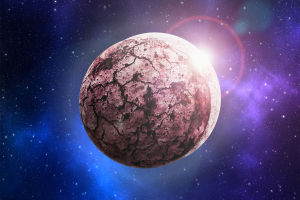The rhythmic rise and fall of ocean tides, a constant spectacle on our coasts, is a captivating dance choreographed by the Moon's gravitational pull. But how exactly does our celestial neighbor influence Earth's water so dramatically?
Why Tides Flow with Moon Gravity
The Earth's side facing the Moon has a larger gravitational pull from it, whereas the side facing the other side experiences a weaker draw.
This causes the water to swell on both sides, one on the side that is closest to the moon and, strangely, another on the side that is farthest from it. The far side bulge results from the water being somewhat less attached to Earth by gravity than the bulge facing the Moon, which is caused by a stronger gravitational attraction. The areas between these bulges suffer low tides, whereas these bulges are subject to high tides.
As Earth rotates, locations experience high and low tides roughly every 12 hours. However, the story doesn't end there. The Sun also plays a role, though to a lesser extent. When the Sun and Moon are aligned (during full and new moons), their gravitational pulls act together, amplifying the tidal bulges. These are called spring tides, with higher highs and lower lows than usual. Conversely, during the first and last quarter phases, the Sun and Moon pull at right angles, partially canceling each other's effect. This results in neap tides, with less dramatic variations in water level.
How Tides and Waves Occur | Full Moon Effects
Video by Klonusk
How Moon's Influence Affects Us
There is also the effect of the Moon's orbit. The Moon's orbit around the Earth is somewhat elliptical rather than exactly spherical. This indicates that during the month, the Moon's distance from Earth changes. Higher spring tides result from the Moon's greater pull at its closest point or perigee. On the other hand, the tides are less noticeable at the Moon's farthest point or apogee.
Well, Lykkers, knowing how the Moon affects tides is super important for coastal communities. Tide predictions help fishermen, sailors, and surfers plan their activities. High tides can create strong currents and impact navigation, while low tides reveal underwater areas perfect for exploring. If you’re curious to learn more about the Moon and tides, check out these great books.
Books to Dive Deeper
1. Moon and Tides: Gravitational Effects of the Moon Astronomy Guide Grade 3 Children's Astronomy & Space Books by Baby Professor
This book is a great introduction to the moon and tides for young children. It uses simple language and illustrations to explain how the moon's gravity pulls on the Earth's oceans, causing them to rise and fall. The book also discusses the different types of tides, such as high tides and low tides.
2. The Relationship of the Moon and the Tides by Baby Professor
This book is a bit more advanced than Moon and Tides, but it is still appropriate for elementary school children. It goes into more detail about the moon's gravity and how it affects the tides. The book also discusses the impact of tides on Earth's environment, such as on plant and animal life.
3. Gravity by Jason Chin
This book is a great introduction to gravity for young children. It uses simple language and illustrations to explain what gravity is and how it works. The book also discusses the different ways that gravity affects our world, including the moon's gravity and its effect on the tides.


